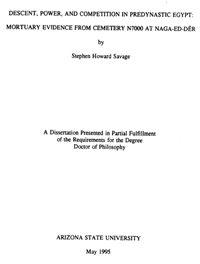| Main » Ad Board » ДРЕВЕН ЕГИПЕТ И АФРИКА » Археология |
| 08.07.2017, 08:59 | |
Изследване на социалното разделение в древноегипетското общество от Преддинастичната епоха проследено на основа на погребенията в некропола (N 7000) Нага ед Дер, Среден Египет. Погребенията са групирани в представителни клъстъри на основата на пол, възраст и социално положение. Представена е картина на социалната структура в различните археологически култури, предшестващи обединената държава на фараоните: Бадарийска (5500-4000 г/ пр. н.е.), Амратска (4000-3500 г. пр. н.е.), Герзейска (3500-3200 г. пр. н.е.), Протодинастичен период (ок. 3200-3100 г. пр. н.е.).
- на английски език, от Google Docs,формат PDF, файлът не е архивиран. Сваляне с ляв бутон (downloading by left button) от страницата на предоставящия сървър, после през бутона стрелка надолу/after by down arrow button.
| |
| Views: 1234 | Placed till: 08.08.2022 | Rating: 0.0/0 | |

